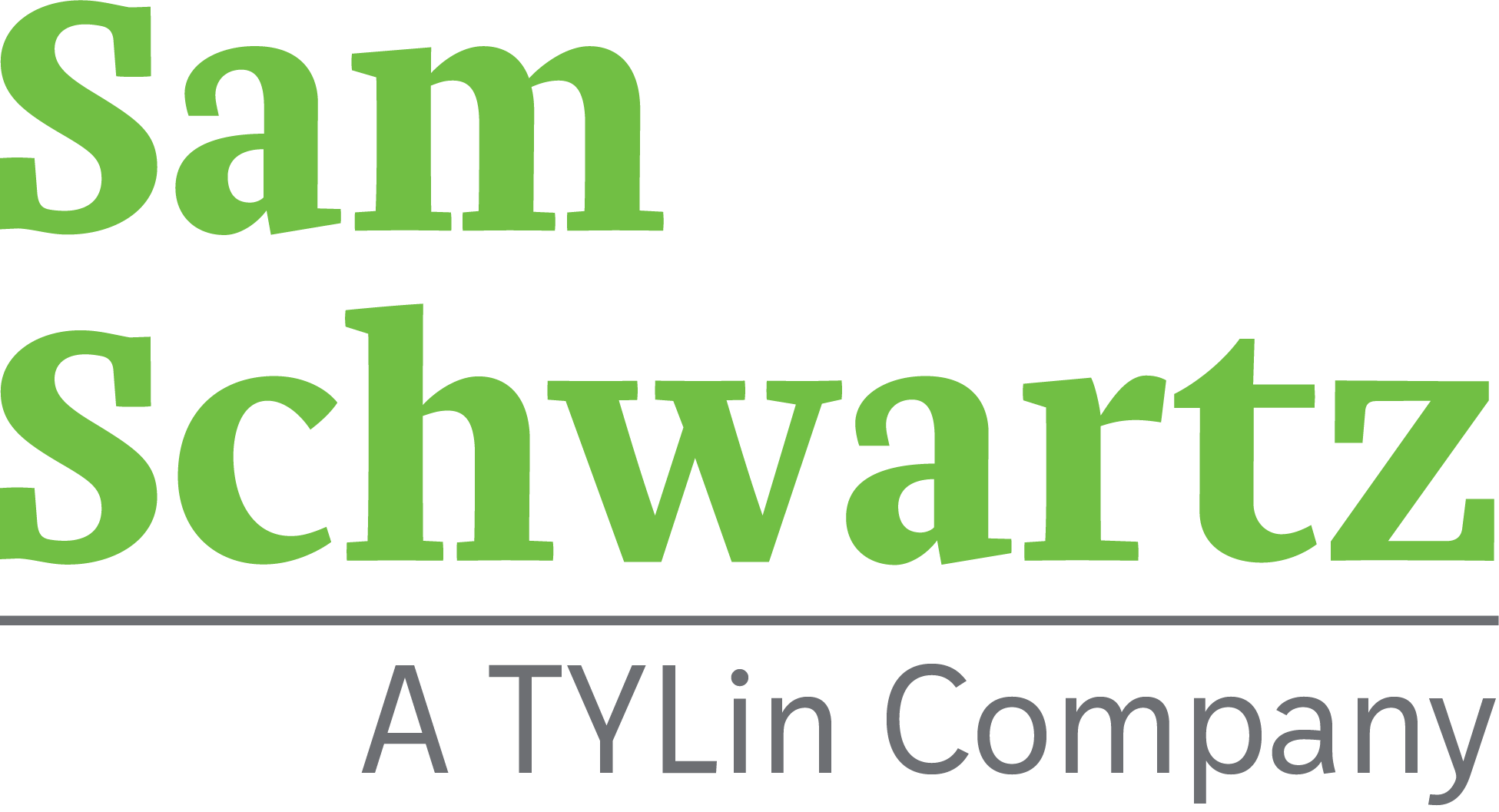What can your curb do for you?
Just like your parents’ record player and tiki drinks, curb space—a once overlooked and undervalued piece of infrastructure—is the hottest game in town. The curb has traditionally been used for vehicle storage, with reactive regulations periodically occurring to address land use changes or specific requests. But the face of the curb is quickly being revolutionized as a growing number of uses—including bike lanes, delivery trucks, city buses, trash collection, ride-share, and personal vehicles—are now competing for this part of the street. Cities large and small are beginning to see the effects of this transition through increased demand for pick-up/drop-off areas, space for bikes and scooters, and retail amenities.
Given this new rivalry, how can cities effectively plan for the curb of the future while also balancing the needs of their community?
Below is the Sam Schwartz guide to getting the most out of your curb, based on strategies and processes that have been successfully employed in cities throughout the country.
Determine your priorities. With curbside space becoming increasingly coveted, more and more requests to accommodate different needs will be made. An accessible parking space here, a no-standing zone there, valet spaces—the list could go on. And it can be difficult to know who should be prioritized where. Establishing a unified hierarchy of user groups will arm cities with a means to address these requests and guide changes to how curb space is allocated.
Know your system. Where are the loading, residential parking permit, or 15-minute standing zones in your community? Do the signs on the street match the code? Having a grounded understanding of what is on the street creates a foundation that cities can use to accurately project needs, alter regulations, and (most importantly) determine what is not known and should be surveyed in the future.
Survey appropriately. Surveying the behavioral needs and nuances of today’s curb is key to realizing opportunities for tomorrow. Turnover surveys, systemwide utilization surveys, intercept surveys; there are a plethora of options that provide valuable and distinct insights. Selecting the correct survey will empower cities with effective data to unlock and optimize their curbs true potential.
Designate holistically. Next begins the designation process. Designations need to provide access to key user groups, while balancing the needs of the overall community. It is essential to resist consenting to the squeaky wheels by thinking about the health of the neighborhood, district, or corridor you are working in at a larger scale. A solution for one individual often creates issues for others, thinking more holistically will benefit the group by balancing their needs. Hint: this is where the hierarchy developed in step one comes into play.
Price in accordance to demand. When curb space is filled with parked vehicles, it is generally because it is priced too low. Low prices result in low parking turnover which prevents people from accessing stores or residences. For example, a packed curb on a downtown street means fewer people can access stores on the street, hurting the businesses and decreasing tax revenue. The ideal parking occupancy is around 85%, translating to about 1 or 2 empty spaces per block for drivers to park in. While often seen as a hassle, pricing the curb is a powerful and important tool for economic development and accessibility.
Enforce. Any decisions that have been made up to this point will be disregarded without an effective enforcement system in place. Boots on the ground not only ensure that regulations are being followed, but limit the confusion and negative perception that can often come with these changes, particularly when a new technology is introduced or signage is installed.
Implement and monitor flexible designations. Have we mentioned that the curb is changing? As cities, transportation, and technology grow increasingly interconnected, it will continue to do so, and ensuring that the policies being implemented are nimble, flexible, and data-driven is key to adapting to future needs. This includes establishing systems that can be expanded, altered, or eliminated at the same pace as the changes and disruptions occurring in our transportation landscape.
Bonus: update technology. There is an alphabet soup of parking technology applications out there (LPR, PGS, PARC, RFID, etc.), with more arriving each day. These technologies are making the task of parking more seamless for the user and more closely tracked for the enforcement operator. Talking to technology companies about what your community’s goals for the curb are will ensure that the right technology is pursued. Generally, upgrades in parking enforcement and data storage should work towards gaining real-time, cloud-based technology, that is digitally stored/accessed.
Want more vital transportation stories? Subscribe to TransCentral today.

